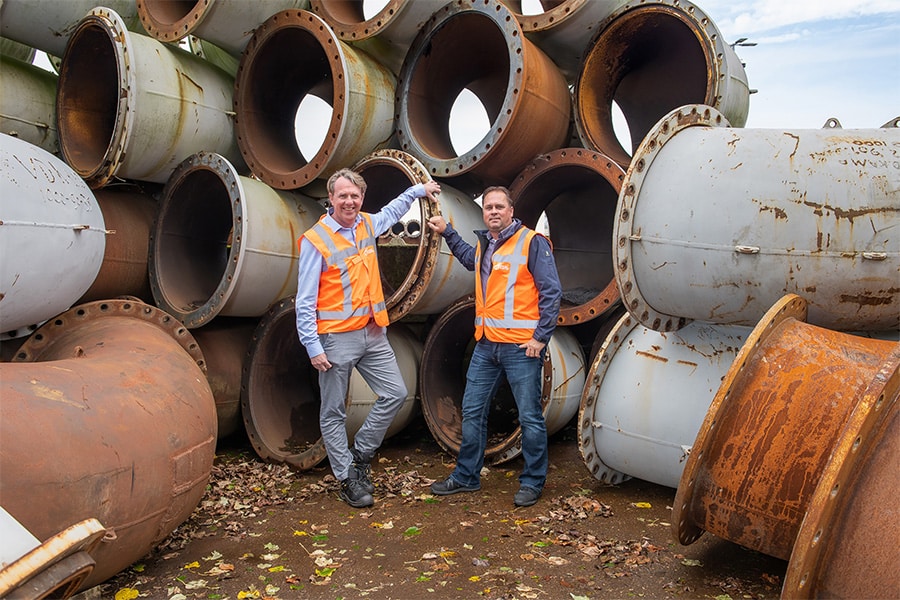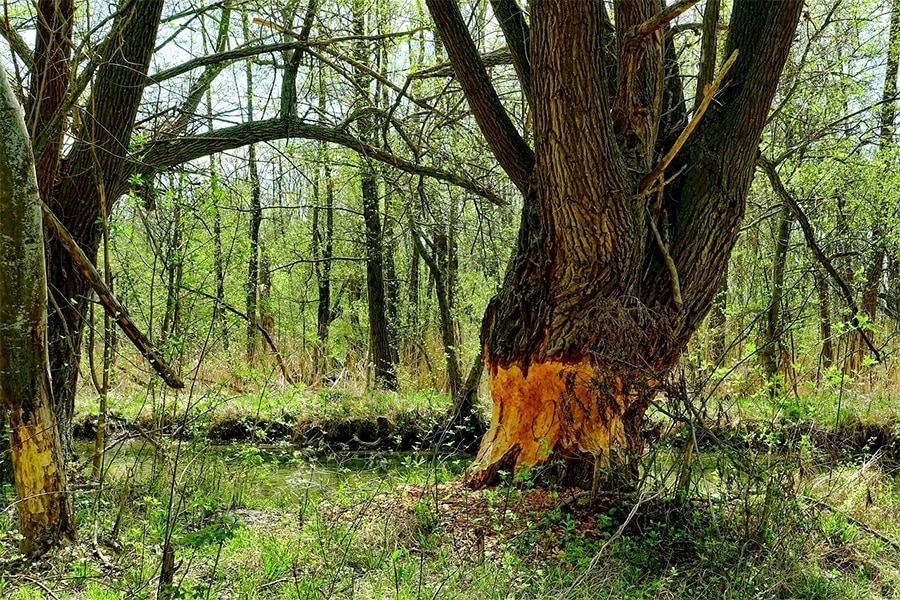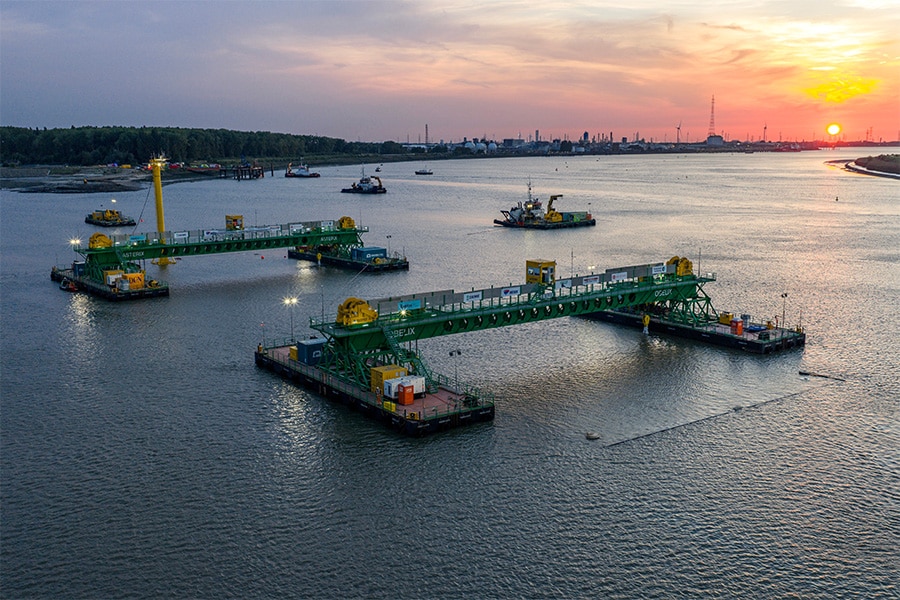
In four construction seasons to the most sustainable dike in the Netherlands
In the north of the Netherlands, Combinatie Waddenkwartier is working to strengthen Groningen's Lauwersmeer Dike. The combination, consisting of Heijmans and GMB, took on the project in 2020 as a 2-phase contract from client water board Noorderzijlvest. Construction began outside in April 2023, which will take a total of four "construction seasons. Project manager Gérard Porton takes us around the dike and discusses the steps leading to the most sustainable dike in the Netherlands.
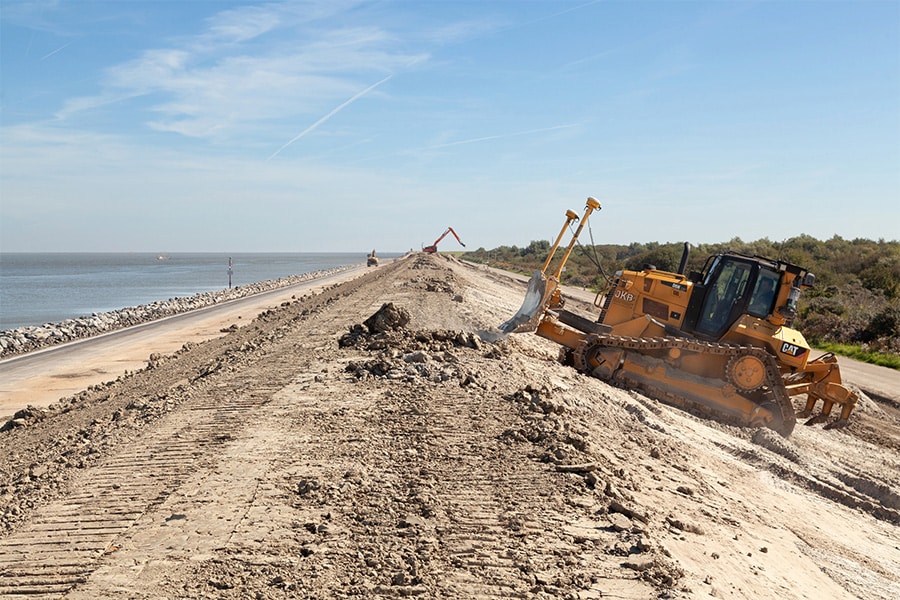
Between Lauwersoog and the Westpolder lies the Groningen Lauwersmeer Dike. That dike no longer meets the safety requirements and must therefore be reinforced. "Based on the preliminary design that had already been drawn up by the water board and had been tested for feasibility, opportunities and sustainability, we as a construction consortium created the final and execution design," says Gérard. "On February 17, 2023, we were awarded the construction contract and started the execution outside. That takes four years, or rather, four construction seasons from April to October. During the storm season, we are not allowed to do anything outside the dike. Inside the dike, however, we are allowed to finish the work, so we are a little more spacious."
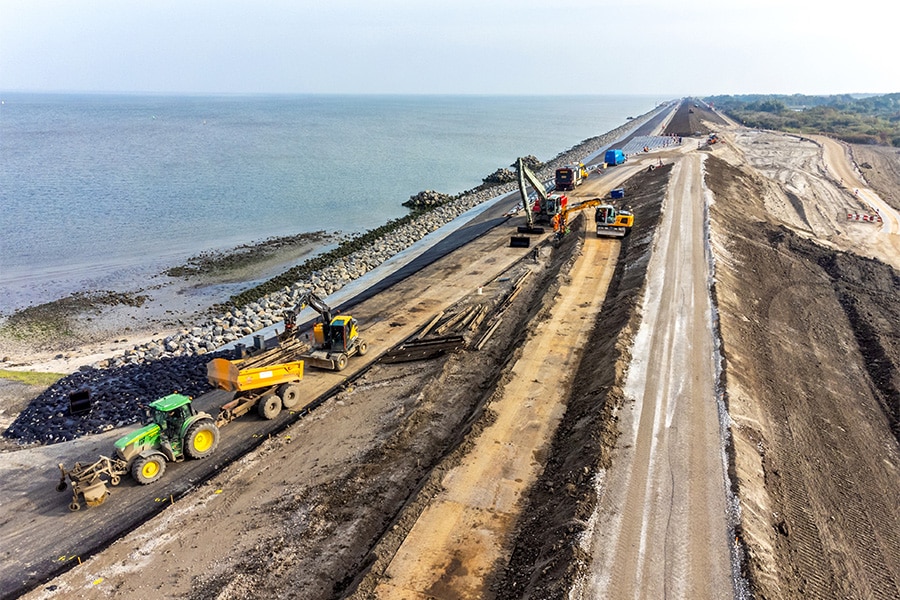
Linkage projects
Besides reinforcing the dike over a length of 9.2 kilometers, a number of linkage projects are also included. "These are projects that have a direct interface with the dike and which the water board, together with the municipality of Het Hogeland, the province of Groningen, Rijkswaterstaat, the Groninger Landschap on behalf of cooperating nature organizations and the Ministry of Defense have added to the dike reinforcement," Gérard explains. "In this way, projects can cleverly hitch a ride with the work on the dike. If you let an opportunity like this lapse, it won't happen again for a while. A total of seven linking projects were named in advance, and all seven will be included in the realization. They range from the renovation of the Western Port Dam and the realization of a second access road to the harbor to the construction of a bicycle path across the dike, the adaptation of the maintenance road of Defense and three ecological linking projects that stimulate biodiversity on and around the dike and of the Wadden Sea."
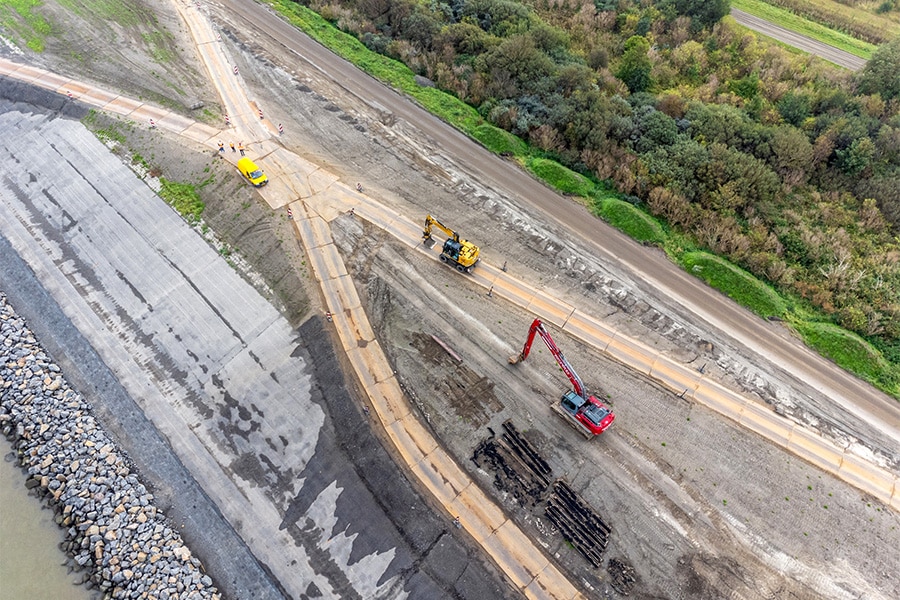
Demonstrably sustainable
The ambitions of the combination and the water board don't lie. "We have agreed together to make the most sustainable dike in the Netherlands. Of course, this is a snapshot in time, because developments continue unabated. In any case, all the material that is released will be reused for the full 100%, ranging from the asphalt and copper slag blocks to the clay and concrete products," says Gérard. "By reusing all the clay, we need to bring in much less Class 1 clay, and that saves enormously in transport movements and thus CO2 emissions. We also get almost all the building materials within a 50-kilometer radius of the work. Only the quarry stone comes from far away. Furthermore, we use electric equipment as much as possible, which reduces greenhouse gas emissions on the construction site during construction by approximately 50%. We as Heijmans and GMB are not doing this alone. We have found several parties in the region willing to invest in electric equipment as well." And Combinatie Waddenkwartier can also demonstrate those sustainability measures. "We made a sustainability report during the planning phase of the project, which also substantiated our ambitions and measures."
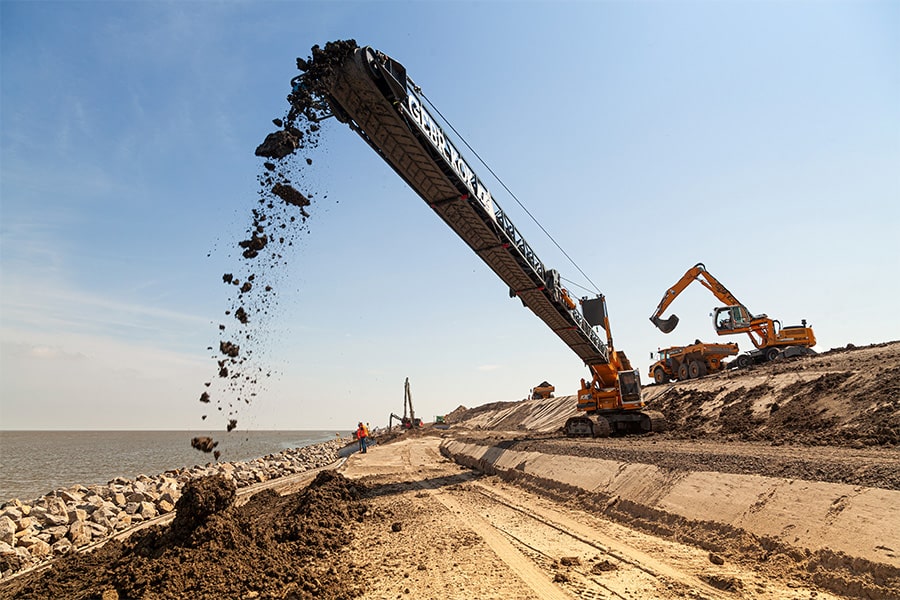
Three sub-areas
Back to the dike reinforcement itself. "We started implementation on the border with Friesland, and that is with the maintenance outside the dike at the R.J. Cleveringsluizen, the Lauwersmeer sluices," Gérard continues. "The old dike revetment will come off and come back completely new in a stronger and heavier version. We then set course for the port of Lauwersoog. The provincial road here was reconstructed several years ago and lies on top of the primary barrier. The reinforcement work is therefore being done outside the provincial road, where we are installing a sheet pile wall with a retaining wall behind it. With this method, we also create a promenade overlooking the harbor, separating pedestrians from bicycle traffic. The third section is the rural dike, whose revetment will also be removed, then raised to 100 cm and finished again in a fairly traditional way with Verkalit sett stone, asphalt and greenery."
To date, the work is proceeding nicely on schedule. The dike is being raised between 70 and 100 centimeters along its entire length, depending on the location. The project will continue until 2027, after which the Lauwersmeer dike in Groningen will again meet safety requirements for at least 50 years.
